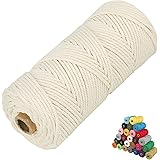Undertaking home improvement projects can be both rewarding and challenging. Many individuals embark on DIY tasks to enhance their living spaces or to address necessary repairs. However, sometimes the simplest tasks are complicated by common pitfalls, which can lead to frustration or inaccurate results. This is where a collection of insightful DIY tips and tricks becomes truly invaluable for both novice and experienced enthusiasts.
In the accompanying video, several expert-level hacks are shared, promising to streamline your next project. These genuinely useful techniques, accumulated over years of practical experience, offer solutions to everyday DIY dilemmas. From achieving perfect measurements to ensuring precise drill holes, these home improvement strategies are designed to boost your confidence and improve the quality of your work.
Mastering DIY Techniques: Essential Tips and Tricks for Every Home Project
For anyone involved in general home maintenance or more specific building tasks, precision is often the key to success. Incorrect measurements, for example, can lead to wasted materials and considerable rework. Therefore, understanding effective measuring techniques is fundamental for any DIY endeavor.
Achieving Accurate Measurements Every Time
Accurate measurement is undeniably one of the most critical steps in any DIY project. A small error can easily derail an entire task, making subsequent steps far more complicated. Many DIYers frequently encounter challenges with standard tape measures, especially when precise readings are needed.
Improving External Measurements
When measuring from the end of a piece of timber, the small, wobbly hook on a tape measure is often a source of inaccuracy. This hook can slip or shift, thus compromising the precision of the measurement. A simple yet effective technique involves starting the measurement from an even number on the tape measure, such as 100 millimeters or 4 inches, instead of the very end. This initial offset ensures a stable starting point on the material.
The tape measure is then held firmly at this chosen mark, and the required length is measured from there. It is crucial, however, to remember to subtract the initial offset from the final reading. As a crucial double-check, a rough measurement can be taken from the actual end of the material, providing immediate feedback if the calculation was forgotten or if a significant error occurred. This method significantly enhances measurement reliability.
Mastering Internal Measurements
Measuring internal dimensions, such as the width of a cabinet or a window frame, often poses another set of difficulties. Traditionally, an attempt is made to span the entire distance with a tape measure, which frequently results in inaccuracies of one or two millimeters. Such small discrepancies can be problematic, especially when fitting items like blinds or precisely cut timber.
A more accurate approach involves dividing the internal measurement into two distinct segments. First, a convenient round number, for example, 300 millimeters, is measured from one end and a clear mark is made. Then, the remaining distance from this mark to the opposite internal edge is measured. These two precise measurements are subsequently added together to yield an extremely accurate total. This technique minimizes the effect of tape measure bending and observer error, which are common issues when trying to measure a tight internal space in one go. Using painter’s tape for temporary marks is recommended if the surface should not be marked permanently.
Perfecting Your Drilling and Fixing Techniques
The precise placement of drill holes is paramount when installing hardware like hinges or mounting various fixtures. An off-center pilot hole can cause screws to drive crookedly, leading to misaligned components. This often requires corrective action to ensure the final fit is flush and aesthetically pleasing.
Centering Drill Holes with Ease
Achieving a perfectly centered pilot hole can be a common struggle, particularly if a self-centering bit is not available. Even when care is taken to mark the spot precisely, the drill bit can sometimes wander due to the grain of the wood or uneven pressure. A hole that has started off-center, even by a millimeter or two, can be corrected before it progresses too deeply.
The solution involves angling the drill bit towards the intended center of the mark, drilling slightly deeper while still angled. Then, while the drill is still running, the bit is slowly straightened. This method persuades the hole to re-center itself, creating a true starting point for the screw. This technique is often appreciated for saving materials and ensuring the correct alignment of fixtures.
Adjusting Fixtures with Strategic Drilling
Sometimes, even after careful marking, a fixed element like a hinge can shift slightly when screwed into place. This movement, often a millimeter or so, can result in misaligned doors or gates. However, this issue can be rectified strategically by leveraging the remaining screw holes.
If a hinge has shifted, for instance, to the right, the next pilot hole can be intentionally drilled slightly off-center to the left. Once the initial screw is loosened, tightening the new, offset screw gently pulls the fixture back towards the center. This process can be repeated on alternating sides, allowing for fine-tuning of the fixture’s position. This method permits adjustments of one or two millimeters, ensuring that the item is perfectly aligned and firmly secured once all screws are tightened. The friction between the fixture and the surface helps maintain the final position, preventing further movement.
Efficient Workshop and Outdoor Organization
Practical solutions for maintaining order and efficiency, both in the workshop and during outdoor projects, are constantly sought by DIY enthusiasts. Simple yet clever methods can save significant time and prevent unnecessary complications. This applies especially to tasks involving string lines or paint cleanup.
The Effortless String Line Knot
A taut string line is indispensable for various tasks, including setting out garden paths, marking straight edges for construction, or ensuring level layouts. Traditional knot-tying methods often result in secure but difficult-to-release knots, causing frustration when the line needs to be removed. An improved method offers both security and convenience.
Once the string line is wrapped tightly around a pin or stake, the trick involves bringing the free end up and over the existing taut line. This action creates a self-locking mechanism where the tension of the main line holds the free end firmly in place. This knot remains incredibly secure while in use, but it can be released with remarkable ease. Simply popping the looped end over the pin allows the entire setup to unravel smoothly, saving time and preventing tangles, regardless of the line or stake size.
Preserving Paint Tools for Future Use
The cleanup process after painting can be tedious, and paint tools frequently dry out between coats or at the end of a workday. This often leads to wasted paint, damaged brushes, and rollers, which translates to additional costs. A simple preservation technique helps maintain the usability of these tools over several days.
By wrapping paint rollers and trays securely in plastic bags, air exposure is significantly reduced, preventing the paint from drying. Paint brushes can be similarly wrapped, staying soft and ready for reuse for days. Furthermore, cleaning up spills and paint from hands and tools is made effortless with specialized wipes, such as the Ultra Grime wipes mentioned in the video. These wipes are highly effective at removing paint, grease, and dirt, ensuring tools remain in pristine condition without requiring extensive scrubbing.
Streamlining Blind Installation and Picture Hanging
Fitting blinds and hanging pictures are common household tasks that can significantly impact the aesthetics of a room. These projects often present challenges, from cutting blinds to the correct size to ensuring that wall hangings are perfectly aligned. Fortunately, there are clever techniques to simplify these processes.
Cutting and Fitting Blinds with Precision
Installing blinds is a popular and cost-effective alternative to curtains, particularly for those furnishing a new home. Blinds are typically purchased in standard widths, such as 600, 900, or 1200 millimeters, and then cut down to fit specific window openings. Precise cutting is essential for a professional finish.
The key to accurate blind cutting lies in measuring the actual gap size rather than attempting to calculate the fabric length. For example, if a 500-millimeter gap needs to be filled and a 600-millimeter wide blind has been purchased, exactly 100 millimeters of material must be removed. This method avoids complex calculations regarding the blind’s total width and its end mechanisms. While cutting with scissors provides a clean edge, a miter saw can be used for incredibly fast and accurate results. With the blind fully rolled up, including the aluminum center, and the blade running at its highest RPM, a slow, steady cut through both fabric and aluminum yields a straight edge. Any minor fraying that occurs can be easily tidied up with scissors, ensuring that the blind looks great once installed.
Aligning Wall Hangings Effortlessly
Achieving perfect alignment when hanging multiple pictures or prints can be surprisingly difficult. This is largely due to the varying lengths of hanging wires or attachments on the back of different frames, meaning hooks must be placed at different heights for the tops to align. A straightforward method ensures every piece is hung exactly as intended.
First, a print is hung at the desired height, and a faint pencil line is marked on the wall directly at its top edge. The second print is then held against the wall, its top edge also aligned with this initial mark. A second mark is then made where its hook or wire naturally falls. The distance between this second mark and the actual hook point on the second print indicates how much higher or lower its hook needs to be placed to match the first print’s top edge. For instance, if the difference is 58 millimeters, the second hook is placed 58 millimeters higher or lower as needed. This simple comparative measurement guarantees that the tops of all wall hangings are perfectly level, creating a polished and harmonious display.
Enhancing Circular Saw Accuracy and Plasterboard Fixings
Optimizing the use of power tools and selecting the correct fixings are crucial aspects of efficient DIY work. Understanding how to set up tools for maximum precision and choosing the right materials for specific applications can prevent common errors and improve overall project quality.
Precise Circular Saw Offset Measurement
When using a circular saw with a straight edge guide, knowing the exact distance from the edge of the saw’s base plate to its blade is essential. This measurement allows the guide to be offset correctly, ensuring that the cut is made precisely where intended. Relying on a tape measure for this can be prone to slight inaccuracies.
A more reliable method involves using a piece of scrap timber. A very short cut is made into the timber with the circular saw. The distance from the edge of the timber to the cut line is then accurately measured. This provides the exact offset required. Once determined, this measurement remains constant as long as the blade type is not changed. Recording this value, perhaps on the saw itself, saves time on future projects and ensures consistent, accurate cuts for all guided saw applications.
Optimal Plasterboard Fixings
For individuals still utilizing traditional fixings in plasterboard, a common material that is essentially cardboard and light plaster, there is a better approach. Using a masonry bit to drill into plasterboard is often not ideal. Masonry bits are designed for harder materials and can tear the delicate plasterboard, creating rough, oversized holes.
A superior choice for drilling into plasterboard is a brad pointed bit. This type of bit is designed to cut a much cleaner, more precise hole. The sharp point helps to prevent wandering, and the cutting edges slice through the plasterboard cleanly, rather than ripping it. This results in a neater installation for fixings, such as claw fixings, which are designed for robust attachment in plasterboard. The cleaner hole provides a better grip for the fixing, enhancing its strength and longevity, which is always appreciated for secure DIY projects around the home.







